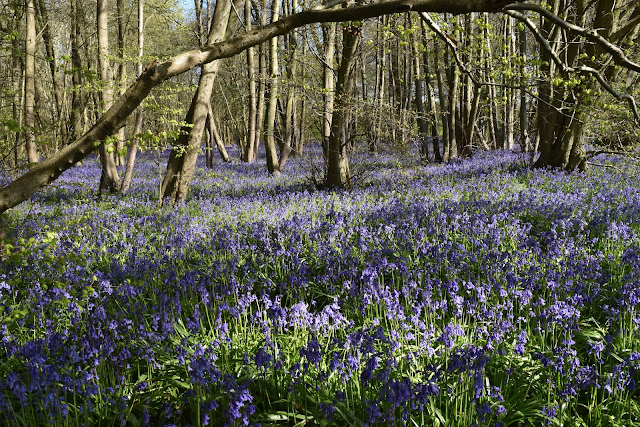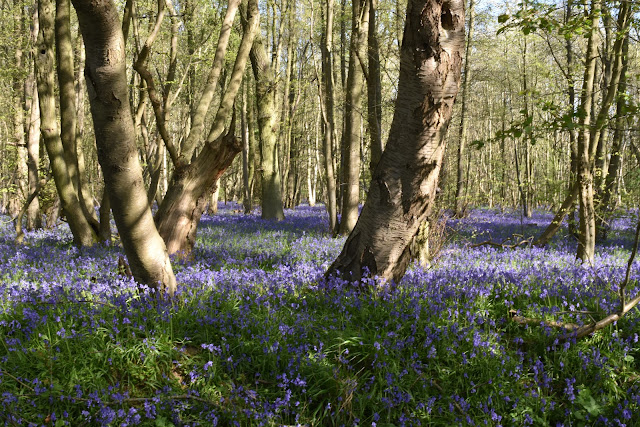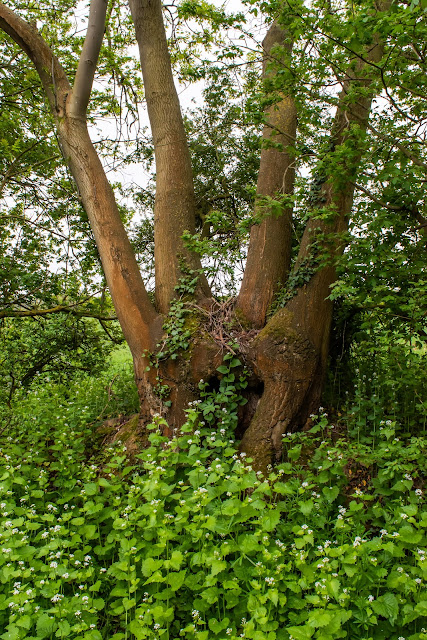Seen on my walk - bluebells and more.
The `Lock Down` to continue for three more weeks - so went the news. Oh well, just more long walks with the camera, in the sunshine. What a shame!! Several interesting plants this few days which make me glad I live on the edge of the countryside. Most of the images of plant life were taken on this one walk
What would the Spring season be without Bluebells? Here are a couple if images taken from the edge of some woods in Layham. With some really good weather this year they really are looking spectacular.
Lone Bluebell on the roadside.
Rands Farm in a lovely setting at the end of Rands Lane.
Love the shape of this tree on the pathway leading to Bullocky Fen. I am told the name comes from years gone by when drovers took their cattle down this lane to drink at the lake.
Beautiful lake owned by Hadleigh Fishing Club, tucked away at the bottom of this lane. What a spot.
Nearby, some Horsetails.
Horsetails are pretty unmistakable but deciding which specific species can be a bit tricky. Fortunately, the various species tend to have their own habitat preference and if you find a horsetail in damp meadows then it will almost certainly be marsh horsetail (Equisetum palustre). This one was taken in a fen area near a local fishing lake - no problem there!
Climbing away from the fishing lake, I make my way across some fields, ending up in the driveway to Hill Farm, and then down to the Hadleigh Rugby Club.
Bird Cherry or (Prunus padus) As its name suggests, the bird cherry is a native tree related to the wild cherry. It can be found in wet woodland or along stream edges and hedgerows. As it can tolerate greater exposure and elevation than wild cherry, it often grows in upland woodlands. Its fragrant flowers appear around April and produce black and bitter fruits. It is a useful tree for a variety of wildlife: the flowers provide nectar and pollen for insects, and the fruit are eaten by birds, badgers and small mammals. Additionally, some moth caterpillars eat the leaves. Seen on one of my walks across the fields and puzzled me for some days!
Possible a first brood male Green Veined White. Obligingly took a rest while I photographed it
This I believe is Sun Spurge which is classified as an annual weed, and is common throughout the UK. Seedlings usually emerge from April to October, but it can grow all year round, especially in mild climates. There were several patches near the Bluebell wood.
Also, Spurge makes an attractive addition to the cultivated garden. This is planted against a wall and looks rather spectacular in that setting.
Wild garlic is a medium-sized bulbous perennial with a distinctive and pungent garlicky smell that pervades woodland in spring. I believe its proper name is Ramsons or Allium ursinum
Finally, we have Lords-and-ladies (Arum maculatum) with its bright autumn berries, is a valuable perennial for shady borders, but its tendency to self-seed means it can quickly become a nuisance. I have spotted several in the hedgerows and verges this year, and was not aware that people grew this in their gardens!
Another great walk, although the fields are a bit rough in places! Well worth it though for all the nature seen.





















Comments